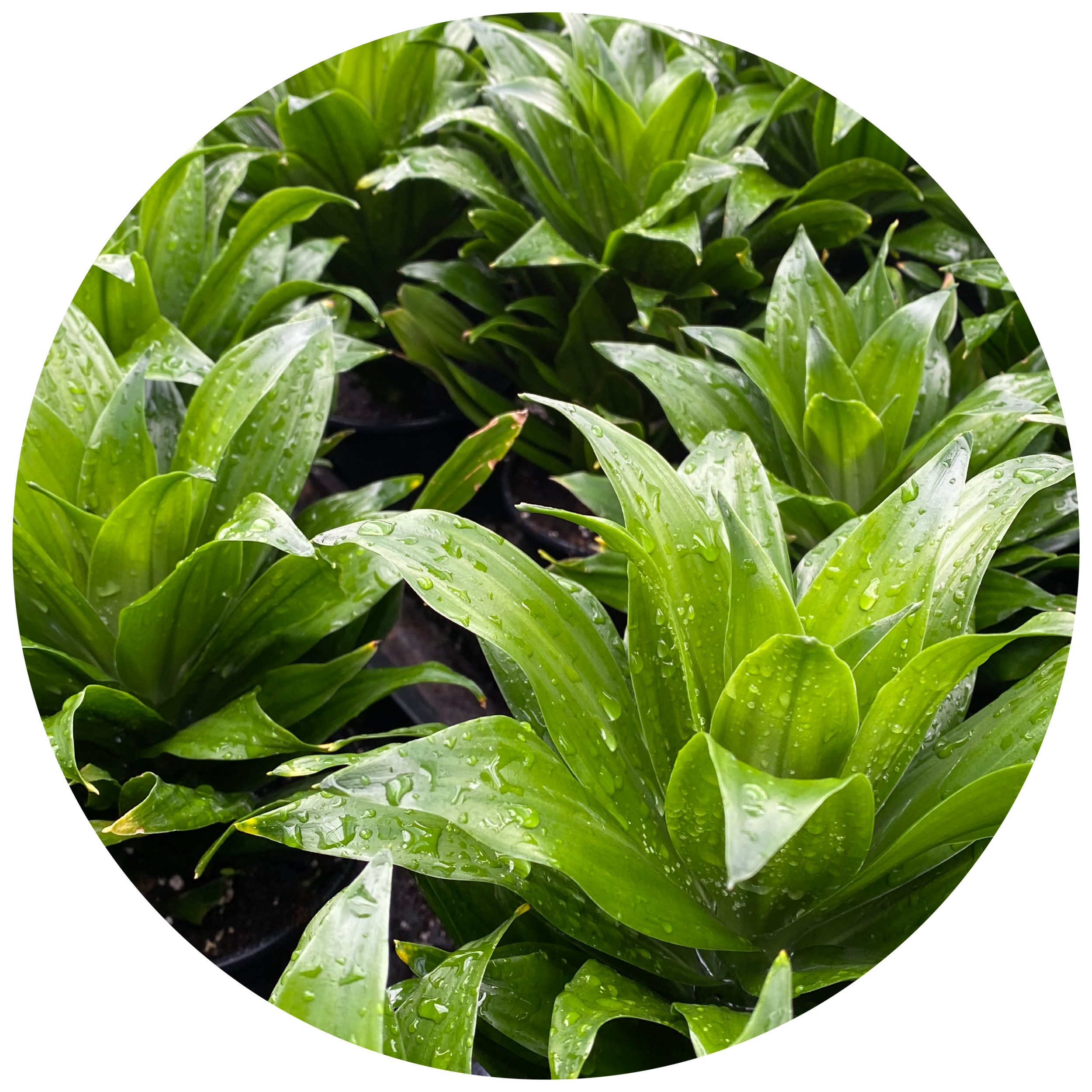Dracaena
The Plant of
Purification & Positivity
Want a plant that is great for beginners? Dracaena is a wonderful plant for anyone lacking a “green thumb” because it’s drought tolerant and unfussy about light conditions. Also known as the dragon tree, these popular indoor plants have long slender green leaves that are lightly edged with red. Not only beautiful and hearty, it is also known for purifying the air. NASA studies have shown that dracaena is quite effective in cleaning the air by absorbing chemicals, including formaldehyde, in indoor spaces.
Dracaena Care Line Classification
Care Information
Place in medium to bright light.
Light
Temperature
Prefers temperatures between 70-75°F.
Water
Water thoroughly when soil feels dry to the touch. Remove wrap or decor before watering. Allow excess water to drain before returning to container.

The Dracaena: Deep Dive
Season
Year round indoors
Care
This undemanding plant prefers bright spots but not in direct sunlight, as this may cause the leaves to burn. If you’re short on light in your home, no worries! This plant will also do just fine in lower light conditions, but it won’t grow as quickly. These plants are quite drought-resistant and don’t require a lot of water, so wait until the top half of the soil is completely dry before watering. Do not over water. It’s important to use distilled water or another non-fluoridated water because fluoride and other salts in the water can cause the tips of dracaena’s leaves to get brown and crispy. This is one of the most common issues with dracaena plants, but easy to fix! It is best to take off the wrap or non-draining container and place in a sink when watering to allow it to drain from the bottom of the pot. Once the pot has drained, replace it to its original spot.
Home to Garden
Dracaena only do well outdoors in warm climates. Choose a spot in your garden that receives indirect sunlight. Direct sunlight causes the foliage of the plant to whiten and turn brown at the tips. Excavate an area that's slightly deeper than the dracaena’s container and about twice as wide. This helps to loosen the soil and makes it easier for the plant's roots to spread without obstruction. Remove the dracaena from its container and look at its roots. If the roots filled the container, gently pull them apart with your hands – especially if they encircled the pot's interior. Place the dracaena in the hole at the same depth at which it was growing in the container and fill the hole halfway up with soil. Tamp the soil down and continue filling the hole. Tamp the soil down again to firm the dracaena into the site. Immediately after planting, saturate the planting site with water, making sure to moisten the plant's roots. For the first four to six weeks while the root system establishes itself in the planting site, water the soil around the plant thoroughly once or twice weekly. After that, you can water once weekly unless conditions are very hot and dry.
Flower Meaning
According to some beliefs, this plant is here to help us face the conflicting and chaotic forces that are at play in our life. It also reminds us that chaos can be a necessary force for creating positive change. It is said to symbolize a magical way of thinking to resolve conflict and bring about positive change.
Fun Facts
The name Dracaena comes from the Greek word for a female dragon. The plants get this name from the red sap that seems to bleed from some cultivars. In addition to creating dyes, this sap has been used in a variety of ways. People throughout the Mediterranean believed the sap to have medicinal properties and used it to treat respiratory and gastrointestinal problems. Others believed it to be a sort of cure-all.






